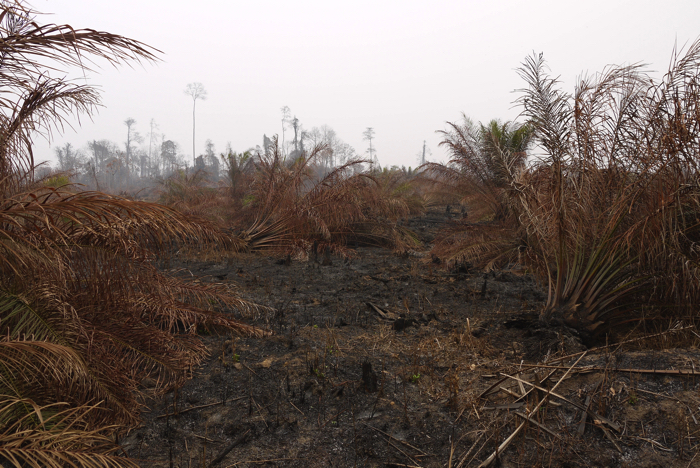- Project Leader : Okumura Motonori (Kyoto University, Graduate School of Agriculture Science)
- Collaborators : Kuwata Mikinori (Nanyang Technological University, Earth Observatory of Singapore)
- : Ito Masayuki (Kyoto University, Center for Southeast Asian Studies)
- : Haryono Setiyo Huboyo (Diponegoro University, Faculty of Engineering)
Outline of Research
This study aims to clarify the influence of volatile organic compounds (VOCs) and fine particulate matter (PM2.5) emitted from Indonesian peat fires on the surrounding area and the global environment. The air pollution such as VOCs and PM2.5 has a sizeable economic influence on Southeast Asian nations with negative impacts including health hazards for the local population. Moreover, the urgent situation of climate change means the emissions of greenhouse gases as well as PM2.5 from Indonesian peat fires is generating concern. To deal with this problem, the characteristics and amount of VOCs and PM2.5 emitted should be estimated according to measurements in areas local to peat fires and in surrounding area. The data obtained in this study are important to understanding the impact of transboundary air pollution on climate change and public health.
Description
The purpose of this study is to evaluate the local and regional air pollution from Indonesian peat fires through pollutant measurements in the local area and in neighboring Singapore. Following drainage for development, the Indonesian tropical peat wetlands become vulnerable to burning. Peat fires are estimated to be responsible for approximately 30% of the global PM2.5 emissions. The transboundary nature of this pollution has a sizeable economic influence on Southeast Asian nations with negative impacts including health hazards for the local population, the closure of airports and other disruptive influences on the wider travel industry. Moreover, the urgent situation of climate change means the emissions of greenhouse gases as well as PM2.5 from Indonesian peat fires is generating serious concern. Thus, reducing local and regional air pollution must be tackled in conjunction with mitigation of global warming.
The significance of this research is based on linking the measurements of PM2.5 and VOCs in the atmosphere and measurements at the site of the peat fire to clarify the amount and characteristics of peat fire emissions. The measurement data obtained in this study will be indispensable in calculating the emissions inventory of PM2.5 and VOCs generated from future peat fires. Linking these data with satellite measurements will permit more precise estimates of the amount of VOCs and PM2.5 emissions. These data can then be supplied to numerical models that allow a greater understanding of the influence that VOCs and PM2.5 emissions from peat fires exert on the regional environment and wider climate.
 Peat fires in Sumatra |
 Air pollution originating from Indonesion peat fires |
